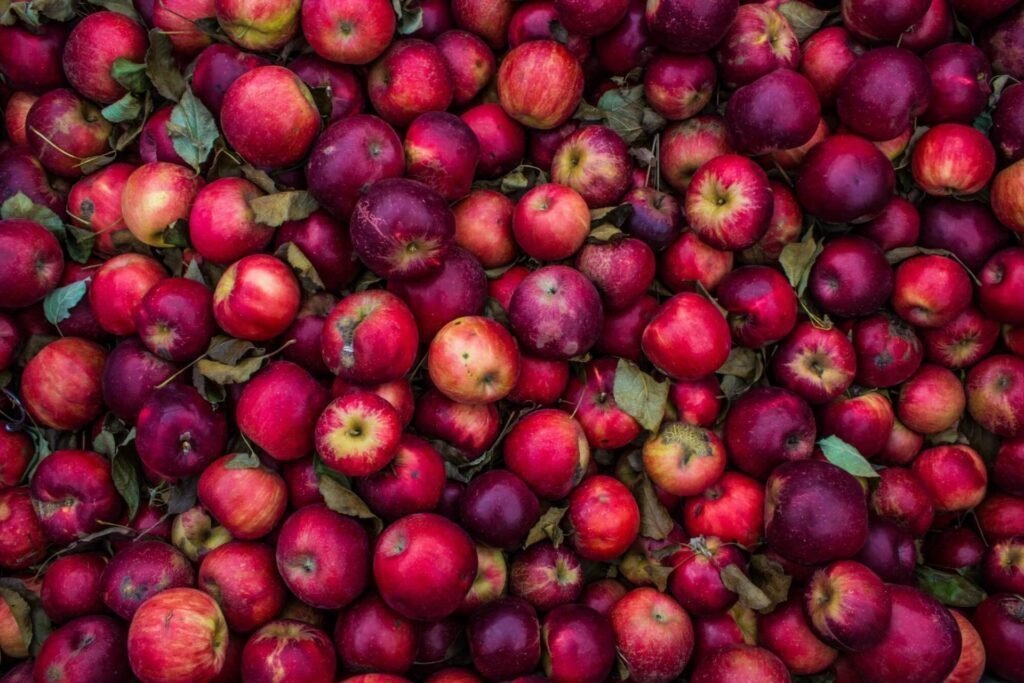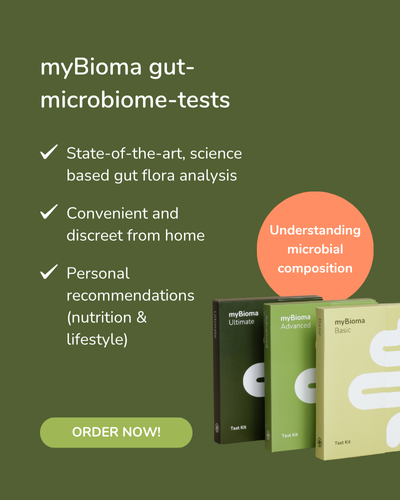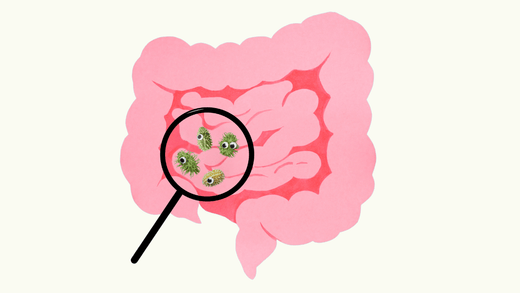Have you always wondered which bacteria in your gut flora are making you ill? Then you've come to the right place! We'll show you 10 bacteria that are harmful to your health and how they affect your gut. In Part I, you'll find 10 of the little roommates that promote your gut health. We also explain the difference between unhealthy gut flora and pathogenic bacteria.
Before we deal with pathogenic bacteria, we need to clarify something essential: A few bacteria, such as salmonella, always cause illness when they infect the body. These are therefore pathogens. However, the majority of all bacteria and microorganisms are not fundamentally bad or evil! 99% of all existing bacteria cannot cause any diseases at all. In fact, we absolutely need bacteria and live with them in symbiosis, i.e. in mutual exchange. (1)
Your gut bacteria neither want to harm you nor help you - they simply exist and behave accordingly to how they are treated. If the climate in your gut is harsh, the bacteria tend to behave more aggressively. In addition, pathogenic bacteria can colonize much better in an unbalanced environment. Therefore, a sick microbiome depends not only on the types of bacteria, but also on the environment in which they live. (1)

We take a look at the different bacteria that can make your microbiome sick.
It is an incredibly complex system. However, numerous studies have already identified some bacteria that can be harmful to health or occur more frequently in sick people. We will now take a closer look at these bacteria!
1. Escherichia coli
E. coli is a bacterial species with countless subtypes. The bacterium behaves differently depending on the subtype. Some E. coli subtypes can cause serious intestinal infections, while others are completely harmless and a normal part of the intestinal flora. Some of the pathogenic E. coli can cause diarrhea - for example, diarrhea caused by travel abroad is often an E. coli type. Health-promoting E. coli, on the other hand, can be very useful and produce vitamin K. Certain E. coli subtypes are also used as probiotics. (2, 3)
2. Bacteroides
Bacteroides is also a bacterial species with many different subtypes and is found in most intestinal microbiota. However, it has been shown that certain types, such as B. fragilis and B. vulgatus, can have a negative effect on the gut. These bacterial species are often present in the intestines of people who are overweight and could contribute to obesity. Both are also frequently found in an inflammatory environment in the gut and could stimulate inflammation. (4, 5)

If you suffer from diarrhea, one thing above all is important: drink a lot!
3. Ruminococcus
Ruminococcus is also a diverse bacterial species that is associated with various complaints. Rumincoccus generally appears to promote constipation. R. torques has also been associated with irritable bowel syndrome on several occasions and could be involved in the development of the disease. R. flavefaciens could also cause abdominal pain. Some Ruminococcus subtypes could even be involved in a sugar disorder. (5, 6, 7)
4. Clostridium difficile
Clostridia are a widespread bacterial species that are part of the normal microbiome. Only the Clostridium difficile subtype can cause illness. Under normal circumstances, C. difficile is present in the intestine and does not cause any problems as it is kept in check by the many other bacteria in the intestine. Only if you are treated long-term with antibiotics that kill many different bacteria (broad-spectrum antibiotics) can C. difficile spread in the intestine and lead to severe diarrhea. The entire microbiome must therefore first be severely impaired for C. difficile to cause illness. (8)
5. Actinomyces
Actinomyces can also occur in a healthy intestine. However, a very interesting study has already shown that Actinomyces is associated with obesity and may contribute to its development. Nevertheless, it is of course true that obesity is influenced by many different factors, such as diet, genetics and the microbiome, and is not the fault of a single bacterium. (9)
Not every infection with a diarrhea pathogen requires antibiotic treatment.
6. Campylobacter
Many people have heard of Campylobacter, if not experienced it themselves - because this bacterium is the most common diarrhea pathogen in our latitudes. It is transmitted via contaminated food, especially poultry. In most cases, antibiotic treatment is not necessary as the pathogen is flushed out with the diarrhea. (10)
7. Bilophila wadsworthia
Although Bilophila wadsworthia is not present in large quantities in the intestine, it is very common in tissue samples from appendicitis, for example. In addition, it has already been discovered that B. wadsworthia can damage the intestinal mucosa, which has unpleasant consequences and may contribute to the development of many diseases. (11, 12)

In addition to poultry, eggs in particular tend to be contaminated with salmonella.
8. Salmonella
Like Campylobacter, Salmonella is also well known and a very common cause of diarrhea. They are usually transmitted through contaminated food, such as eggs or poultry. Especially in the hot season, the bacteria can multiply more quickly on food and the risk of infection is therefore higher in summer. So be careful when eating raw eggs or handling raw chicken meat! (13)
9. Helicobacter pylori
H. pylori is a special bacterium: unlike most of its companions, it can withstand high acidity levels and also survives stomach acid. It is precisely there, in the stomach, that H. pylori feels at home and often colonizes. It usually triggers chronic inflammation of the stomach lining (gastritis). This can lead to abdominal pain, nausea or a rapid feeling of fullness. However, gastritis often goes unnoticed and causes neither discomfort nor serious consequences. (14)
10. Pseudomonas
The bacterial species Pseudomonas is also widespread and different subtypes can have different effects on the body. P. fluorescens, for example, has been studied in detail for its effect on the intestinal mucosa. It was discovered that it damages the mucous membrane and can lead to a weakened intestinal barrier. (15)
This is just a small selection of all the intestinal bacteria that can have a negative impact on your health, but don't forget that it always depends on the combination of all bacteria and that many pathogenic bacteria can also be found in a healthy gut!
References
- Bäckhed F, Fraser CM, Ringel Y, et al. Defining a healthy human gut microbiome: current concepts, future directions, and clinical applications. Cell Host Microbe. 2012;12(5):611-22.
- Pawlowski SW, Warren CA, Guerrant R. Diagnosis and treatment of acute or persistent diarrhea. Gastroenterology. 2009;136(6):1874-86.
- Sharma V, Suvarna K, Meganathan R, Hudspeth ME. Menaquinone (vitamin K2) biosynthesis: nucleotide sequence and expression of the menB gene from Escherichia coli. J Bacteriol. 1992;174(15):5057-62.
- Le chatelier E, Nielsen T, Qin J, et al. Richness of human gut microbiome correlates with metabolic markers. Nature. 2013;500(7464):541-6.
- Zhang X, Shen D, Fang Z, et al. Human gut microbiota changes reveal the progression of glucose intolerance. PLoS ONE. 2013;8(8):e71108.
- Rajilić-Stojanović, M. et al. Intestinal Microbiota And Diet in IBS: Causes, Consequences, or Epiphenomena? Am J Gastroenterology 110, 278 (2015).
- Jalanka-Tuovinen, J. et al. Intestinal Microbiota in Healthy Adults: Temporal Analysis Reveals Individual and Common Core and Relation to Intestinal Symptoms. Plos One 6, e23035 (2011).
- Hung YP, Lee JC, Lin HJ, et al. Clinical impact of Clostridium difficile colonization. J Microbiol Immunol Infect. 2015;48(3):241-8.
- Mayengbam, S. et al. Impact of dietary fiber supplementation on modulating microbiota-host-metabolic axes in obesity. J Nutritional Biochem (2018). doi:10.1016/j.jnutbio.2018.11.003
- Man S. The clinical importance of emerging Campylobacter species. Nat Rev Gastroentero 8, 669 (2011).
- Baron EJ. Bilophila wadsworthia: a unique Gram-negative anaerobic rod. Anaerobe. 1997;3(2-3):83-6.
- David, L. A. et al. Diet rapidly and reproducibly alters the human gut microbiome. Nature 505, 559 (2014).
- Crump, J. A., Sjölund-Karlsson, M., Gordon, M. A. & Parry, C. M.Epidemiology, Clinical Presentation, Laboratory Diagnosis, Antimicrobial Resistance, and Antimicrobial Management of Invasive Salmonella Infections. Clin Microbiol Rev 28, 901–937 (2015).
- Suerbaum S, Michetti P. Helicobacter pylori infection. N Engl J Med. 2002;347(15):1175-86.
- Madi A, Svinareff P, Orange N, Feuilloley MG, Connil N. Pseudomonas fluorescens alters epithelial permeability and translocates across Caco-2/TC7 intestinal cells. Gut Pathog. 2010;2(1):16.







